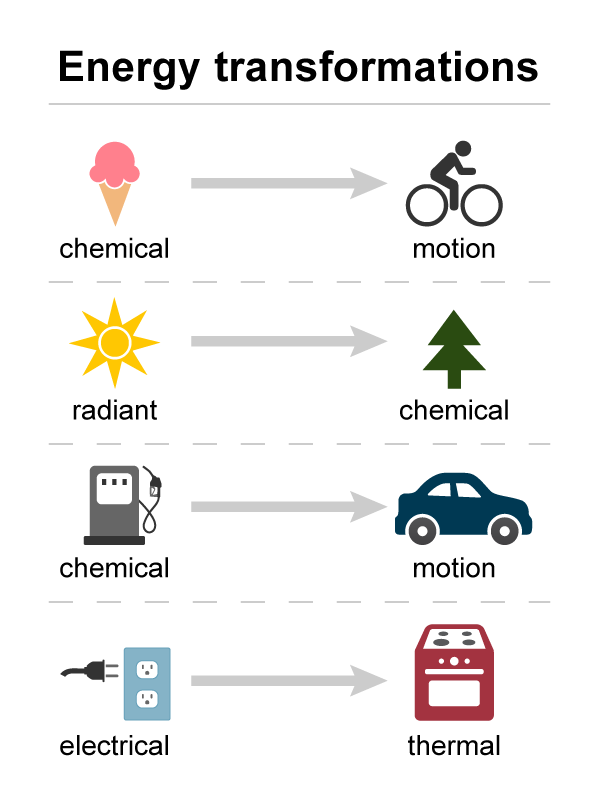Energy is neither created nor destroyed

Source: National Energy Education Development Project (public domain)
To scientists, energy conservation does not mean saving energy. Instead, the law of conservation of energy says that energy is neither created nor destroyed. When people use energy, it doesn't disappear, but instead, it changes from one form of energy into another form.
A car engine burns gasoline, converting the chemical energy in gasoline into mechanical energy. Solar photovoltaic cells change radiant energy from the sun into electrical energy. Energy changes form, but the total amount of energy in the universe stays the same.
Scientists think they have discovered a mysterious new form of energy called dark energy that is causing the universe to grow!
Converting one form of energy into another
Energy efficiency is the amount of useful energy obtained from a system. A perfectly energy-efficient machine would convert all the energy it uses into useful work. Converting one form of energy into another form of energy always involves a conversion into useable (or useful energy) and unusable (or unuseful) energy.
Most energy transformations are not efficient. The human body is a good example. The human body is like a machine, and the fuel it requires is food. Food gives a person energy to move, breathe, and think. However, the human body isn't very efficient at converting food into useful work. The human body is less than 5% efficient most of the time. The rest of the energy is converted to heat, which may or may not be useful, depending on how cool or warm a person wants to be.


